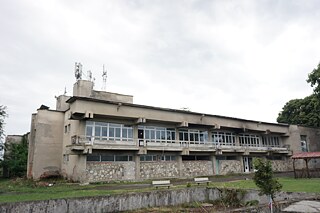Akhmeta
The physical mapping process for the municipality included both theoretical and practical aspects for two months. Experts, along with the educational component of the developed mapping methodology, mentored the municipality’s working group through each step of the process.
A detailed list of buildings and spaces was created. To collect information about these objects, research was conducted through inter-sectoral cooperation, fieldwork, and photofilming. The gathered data was then analyzed and recorded on a digital map, and the results were presented.
A detailed list of buildings and spaces was created. To collect information about these objects, research was conducted through inter-sectoral cooperation, fieldwork, and photofilming. The gathered data was then analyzed and recorded on a digital map, and the results were presented.
Physical Mapping Results
In the municipality of Akhmeta, 38% of the 32 mapped locations are administrative facilities, while 22% are educational institutions. Cultural sites account for 19%, and hospitality facilities comprise 9%. Sports facilities, shopping infrastructure, and transportation infrastructure each represent 3% of the total.
The usage of listed properties follows as 65% partially utilized, and 35% as nonfunctional.
Of the mapped buildings only 3% are structurally stable, 75% are lightly damaged, and 22% are severely damaged.
68% of these properties are municipally owned, 19% are privately owned, and 13% are state-owned.
Notable buildings include The former building of the Atskuri Silk waving administration, the former music school of Akhmeta, Former culture house of Zemo Khodashni, Former Culture House of Matani, culture House of Zemo Alvani, Kvemo Alvani Culture House, former building of Pioneers House in Akhmeta, former building of Akhmeta Cinema, building of communications of Akhmeta, Akhmeta Judo school.
The usage of listed properties follows as 65% partially utilized, and 35% as nonfunctional.
Of the mapped buildings only 3% are structurally stable, 75% are lightly damaged, and 22% are severely damaged.
68% of these properties are municipally owned, 19% are privately owned, and 13% are state-owned.
Notable buildings include The former building of the Atskuri Silk waving administration, the former music school of Akhmeta, Former culture house of Zemo Khodashni, Former Culture House of Matani, culture House of Zemo Alvani, Kvemo Alvani Culture House, former building of Pioneers House in Akhmeta, former building of Akhmeta Cinema, building of communications of Akhmeta, Akhmeta Judo school.






